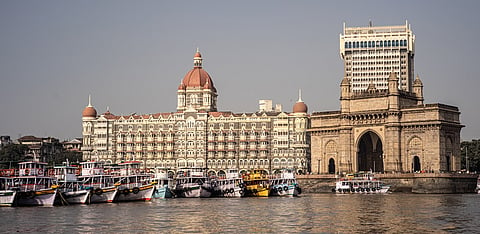Book Excerpt: How 7 islands that were part of a dowry became India’s leading economic centre
It was not until the end of the eighteenth century that the island city of Bombay began to show signs of emerging as a major port city of the western littoral, commanding an impressive export trade in the Indian Ocean. For the greater part of the eighteenth century, Bombay played second fiddle to Surat even as the latter city languished. What gave Bombay an edge at the turn of the nineteenth century was the rise of the cotton trade and, subsequently, the opium trade with China. The consolidation of European private trade and its connections with Indian capital working out of Bombay, Gujarat and central India, the principal catchment areas for the export staples, gave the English city a much-needed boost. The company authorities invited other service groups to come and settle down in Bombay to strengthen the commercial infrastructure, with the result that merchants, artisans and men of capital migrated in substantial numbers, setting up small businesses and responding to unusual opportunities. The combination of political protection and the dynamics of a racially mixed society provided the basis for a robust mercantile culture that has continued to give the city its profile. As Govind Narayan Tembe put it in his description of Bombay, a miscellany of castes and religions was to be found in the city where ‘one’s eyes are dazzled by the heaps of freshly minted coins from the Mint’. Tembe was eloquent in his description of the city’s affluent classes, ‘if one enters a merchant’s house, one cannot help getting the feeling that one has entered the abode of Lord Kubera himself after looking at the opulent furniture, the grand vehicles, the demeanor of his servants and the obvious wealth throughout’. All communities were found here; the city guaranteed an income even to the most ordinary migrant. Arabs, Parsis and Gujaratis migrated to the city in search of wealth and business, taking up the business of overseas trade and provisioning. Some, like Rupji Dhanji, a Kapol Bania, came to the city and took up the business of provisioning the residents by dominating the city’s grain trade. His sons appeared to have accumulated sufficient wealth to take up the business of banking and remittance, eventually setting up a substantial partnership firm under the aegis of Seth Varjivandas. Through the greater part of the eighteenth century, banking establishments in Surat maintained branches in Bombay and came forward as major collaborators of the English company. Closely following on their heels were Parsis, who were particularly prominent in two major businesses, namely, shipbuilding and export trade in partnership with the European private merchants.
…
It is important to remember that both these groups—Gujarati Bania and Parsis— were sponsors of industry in the larger region of western India and drew from an earlier history of cooperation and collaboration with Europeans. While the colonial cities (Calcutta, Bombay and Madras) in their original moment of formation were not set up to foster Asian trade, they certainly required local collaboration for the ease of European business. Thus, grain merchants for city markets, shipwrights for repair work on European ships at the Bombay docks and men of capital to prosecute trade and business under the protection of the company and within the jurisdiction of the company’s custom house were invited to set up residence. Over time, these men became part of the city’s indigenous business class, expressing their commitment and political submission to the system that the ascendancy of the English company embodied. The Parsi community was especially attracted to the city of Bombay, as they sensed opportunities for their artisanal activity as well as their commercial appetite. The community had forged close links with the Europeans in Surat by the end of the seventeenth century, gained familiarity with their ways of working and entered into collaborative projects of trade and respondentia. Their skills in carpentry and ship repairs were acknowledged, and it was therefore not entirely coincidental that the Wadia shipbuilders moved to Bombay and carved a very distinct niche and reputation.
…
Other Parsi families followed suit and worked in collaboration with European private traders and the East India company to establish their foothold in Bombay city. The timing proved perfect—from the 1780s the city began to come on its own and took part in the burgeoning cotton trade of the region. By this time, some political gains at the expense of the Marathas and Mysore had been secured, and the company and its servants were impatient for more territories and commercial gain. Local merchants sensed opportunities in the changing milieu and used their traditional strengths to gain a foothold in the new city and the new
dispensation that came with the political paramountcy of the English East India company. A number of commercial groups and communities began to settle down in Bombay without necessarily disrupting their connections with their naval bases, and Bombay began to assume the features of a major port city capable of drawing capital and investing it in profitable channels. What made the Bombay and western India story particularly compelling was the strength and depth of indigenous capital that could work within the emerging colonial dispensation without necessarily being subjugated by it. Indian capital was not subservient to colonial forces, even if it was not fully capable of subverting the latter or altering the terms of reference for trade and financial dealings. This was not the case in Calcutta, where colonial penetration came early, was backed by territorial gains and was predicated on a ruthless extermination of indigenous trade and manufacture. Admittedly, even in Calcutta, there was a regrouping of local commercial interests and their successful adaptation to the new system, but not with the same level of financial solidity and capacity.
Excerpted with permission from India before the Ambanis — A History of Indian Business, Money, and Economy@2024Penguin

